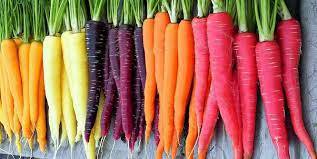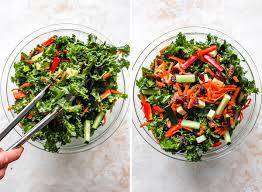Tomato, which we eat every day as a vegetable, is a fruit. Have you ever doubted that all of the other veggies you have always thought and consumed as vegetables could turn out to be fruits?
Considering all the other brightly colored fruits. So, what do you think of the brightly pigmented carrot, is it a vegetable or a fruit?

Is carrot a fruit or a vegetable?
Grown in the wild in Europe and Southwestern Asia, Carrot is a Vegetable. It is a root vegetable, however, its leaves and stems are not edible. Now, we know that carrots are root vegetables, but what exactly is a ‘root vegetable’? These are the plants that grow underground.
Carrots are considered as the ultimate health food since they include minerals and vitamins such as 𝛽-carotene, fibre, vitamin K1, potassium, and antioxidants.
The consumption of carrots has been associated with a decreased risk of cancer and heart disease, and also better eyesight. Furthermore, this vegetable might be an important part of a successful weight-loss diet.
Yellow, white, orange, red, and purple carrots are among the numerous colors available.
How can you differentiate between fruits and vegetables?
Botanical and Culinary distinctions are made between fruits and vegetables.
Fruits are a product, derived from a plant or a tree that includes seeds. This is what distinguishes a tomato as a fruit that belongs to the family of berries. Fruits, on the other hand, must be sweet culinary-wise.
In contrast, vegetables are any component of the plant that does not bear any seeds, which means they are biologically a root, leaf, or stem. These are plant parts that are edible but not very sweet, according to culinary terminology.
Although most people remove the roots and consume the plant above ground, this is not the case with root vegetables. We eat the edible and fleshy roots of the carrots here; concluding that we eat the root of the carrot.
What is the perfect color for a carrot?
Fruits are well-known for their vibrant and diverse color palettes. Carrots are frequently used with fruits because of their vivid orange hue. As mentioned earlier in the article, carrots are found in a variety of colors from white to purple even though they are vegetables.

Each color present in the carrot indicates the presence of different vitamins
- Vitamin A is abundant in orange carrots
- Lycopene is found in red carrots
- Anthocyanin is found in purple carrots
A carrot’s vivid color indicates that it has been properly cultivated and is healthy. Carrots, like red peppers, tend to leak color! As a result, onions sautée with carrots as well as red peppers turn golden-orange.
As we let our vision decide the taste of our food, color plays an important role in the meal. So, be sure that you pick the correct color and variety as per the requirement of your meal.
How to choose a good carrot?
Carrots are available in different varieties. As they are grown throughout the year, you may find them always available at your nearest grocery store.
While picking a carrot, if you happen to think, ‘how to choose the best one’? We have got you.
While you are picking, always look for whole carrots with the lush, vivid green leaves still attached. This method makes the carrots taste sweeter and keeps them fresher longer. Furthermore, a carrot’s texture must be solid, and the skin must be smooth. Avoid the ones that are discolored, wilted, or broken, just as you would other vegetables.
It is not preferred to pick carrots that have tiny white roots hairs peeking out. These tiny white "hairs” are little roots that develop in search of hydration. Too little moisture or the carrot trying to grow around anything in the soil might produce fissures. But it is perfectly fine to be consumed as long as they’re not slimy and still have a solid feel to them.
How Do You Incorporate Carrots Into Your Diet?
Carrots are a vegetable that may be used in a variety of ways. They can be eaten steamed, roasted, raw, boiled, and even as a component in a variety of stews and soups.
Here are some ways how you can use carrots in your cuisine:
- By juicing orange carrots, you may experience a mild and sweet flavor.
- Eat baby carrots with hummus or herbed dips.
- Shredded carrots may be used to baked products
- Julienned carrots may be used in wraps, salads, etc.
|
|
|
|
|
|
If you do not want to lose any nutritional value of the carrots, it is advised to use boiled or raw carrots as they retain most of the nutrition values, also being more juicy and healthy.
Risks and Factors to Consider
Carrots being a rich source of Vitamin A, may be harmful to humans if consumed in excess. Although it is not harmful to one’s health, it does produce a mild orange tint to the skin. Vitamin A overdose cannot be caused by a diet alone. It can, however, occur as a result of the usage of any supplement.
Carrots should be avoided to be consumed in large doses by those who use Vitamin A-rich medicines such as acitretin and isotretinoin for psoriasis and acne, respectively. As it has the potential to produce hypervitaminosis A, which is excess in Vitamin A.
As a result, any change in diet changes must be discussed with a doctor before beginning a new prescription, to avoid the negative impacts of any component on your health.
Conclusion
We can conclude that a carrot is not a fruit, it is a vegetable that grows underground in the soil. Carrots, unlike fruits, do not generate seeds that will subsequently create new plants. As a result of all of these indicators, carrots are considered strictly vegetables.
It has many health benefits from reducing the risk of cancer to better eye health while being nutritious and a rich source of various vitamins. Many varieties of carrots are available that may be found in multiple colors, each rich source of a variety of vitamins. These can be inculcated in your cuisine in multiple ways and are very healthy and nutritious. It may also end up being toxic, in cases where Vitamin A is present in a large amount in carrots and if you are taking Vitamin A supplement for whatever reason, here, the overdose of Vitamin A may lead to a high risk of health.





